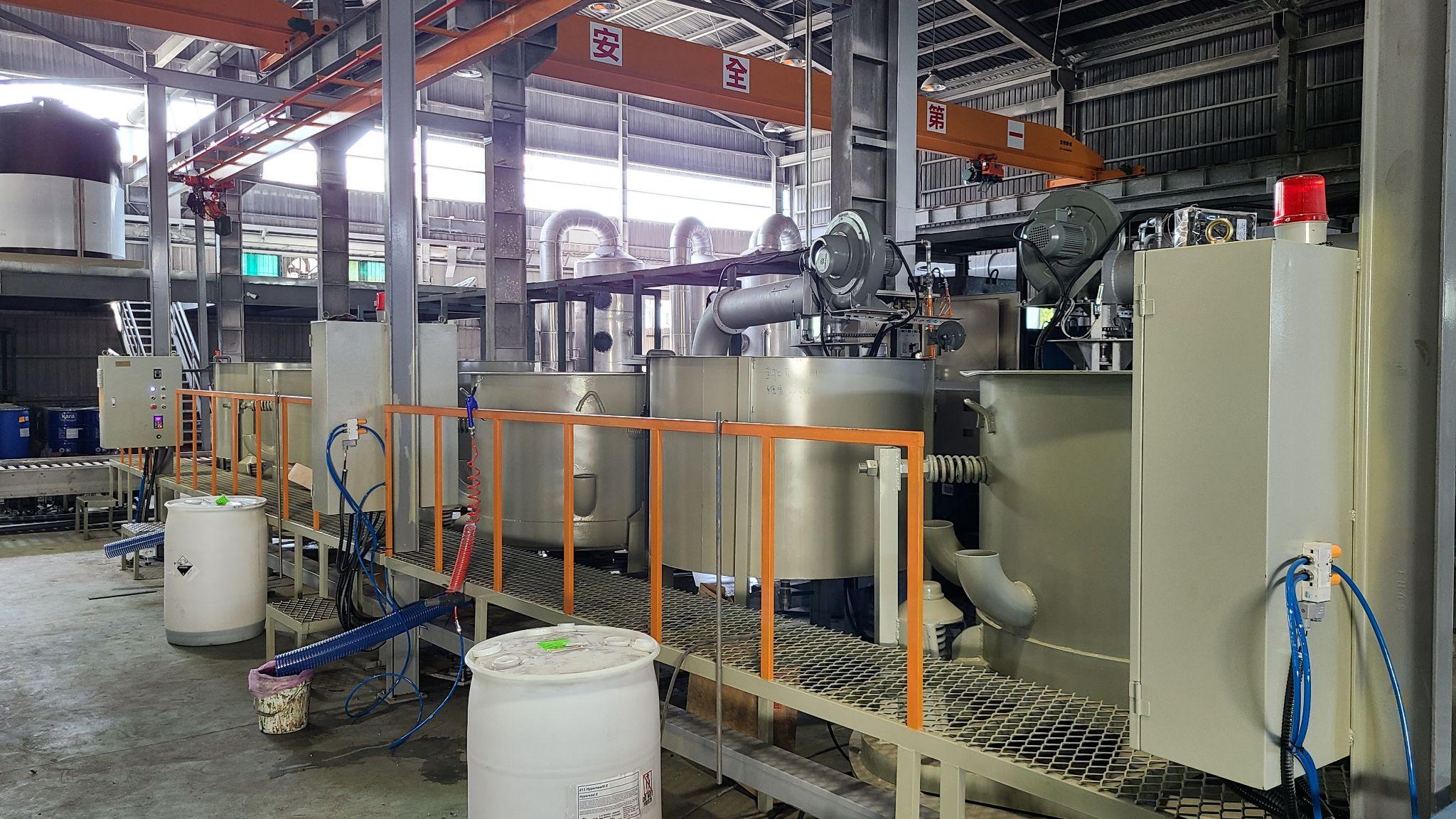The as-plated steel fasteners are then passivated and sealed on a dedicated line, after which the parts are either complete (for inorganic metallic-only surface coating), or primed for the further deposition of polymer topcoats.
Our company uses a proprietary dip spin sealing and passivation production line to apply a protective coating to metal fasteners. This production line is specifically designed to provide a high-quality, consistent coating that enhances the performance and service life of the fasteners.
The dip spin sealing and passivation production line consists of a series of interconnected machines and processes that are carefully coordinated to produce a high-quality coating. The first step in the process is the dip spin sealing, which involves immersing the fasteners in a protective coating material and then spinning them to evenly distribute the coating across the surface of the fastener.
After the dip spin sealing process is complete, the fasteners are then passivated. This involves treating the coated fasteners with a chemical solution that removes any residual contaminants and impurities from the surface of the coating. This is typically done using an acidic solution, such as a nitric acid or citric acid solution, which reacts with the metal surface to remove any contaminants and improve the corrosion resistance of the coating.
The final step in the process is the curing of the coating. This involves exposing the coated fasteners to heat or UV light, which causes the coating to harden and become more durable. This step is critical for ensuring the long-term performance and reliability of the fasteners.
Overall, our proprietary dip spin sealing and passivation production line is an advanced, highly-automated process that produces a high-quality coating for metal fasteners. This production line allows us to efficiently and consistently apply a protective coating to fasteners, and is an important part of our commitment to product quality and our customer’s ultimate satisfaction.
